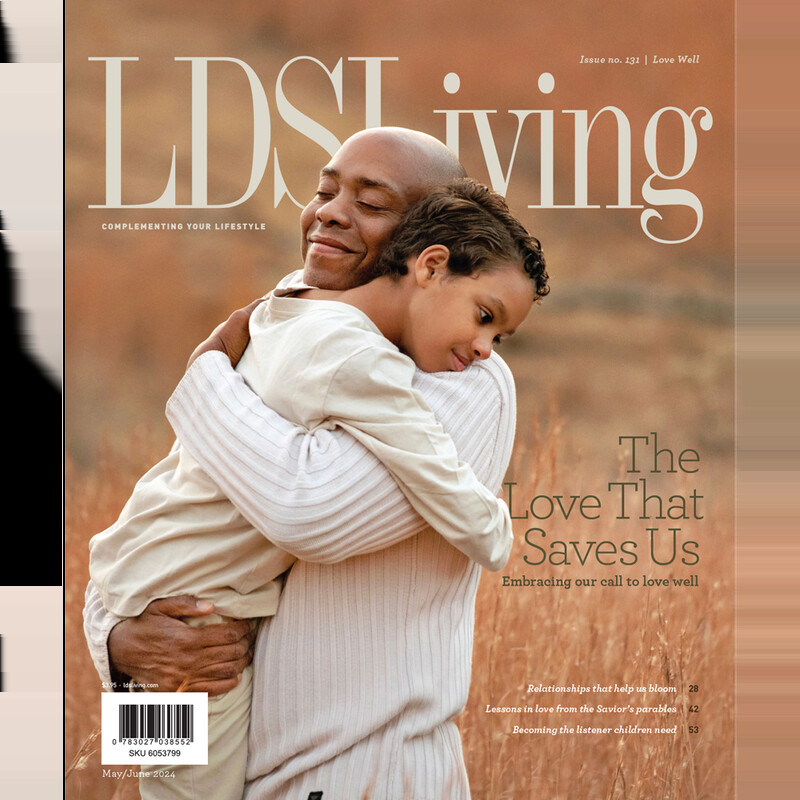Recently I scanned the Book of Mormon to look for the last recorded words or actions of many well-known Book of Mormon figures. As I compiled my findings, I noticed a few common themes, most obviously the sharing of powerful testimonies and prophecies.
None of the themes I found overly surprised me, but as I thought more, I noticed something I had never paid attention to before.
I was a little surprised to realize how easily one could trace the records that became the Book of Mormon back to their writers and caretakers. Unlike its historical counterpart the Bible, the Book of Mormon is never unclear about who authored which part of the record or how it got from one person to another, even despite its vast number of people, locations, and time periods.
Each person responsible for keeping part of the historical record identified when and to whom the records were given next, almost like a priesthood line of authority that allows someone to follow their ordination back to its original source. These details were important enough for Mormon and Moroni to include in their abridgments, starting with Nephi and ultimately ending with Moroni’s delivery of the record to Joseph Smith.
Though I’ve often thought about the blessing it is that we have the Book of Mormon, recognizing this unique fact reinforced to me what a treasure it truly is. What other book of ancient scripture can claim such accurate record-keeping and clear connection to its authors, who often knew Christ personally? To me, it added one more evidence of its truthfulness, sincerity, and ultimate purpose of bringing people to Christ.
With this in mind, here is a brief overview of that “line of authority” from the Book of Mormon authors to its compilers and some of the important instructions that came with it. As you read, I hope you will recognize some of these scriptures and ponder how this path of stewardship might strengthen your own testimony when studying the Book of Mormon in Come, Follow Me this year.
▶ You may also like: The ‘Come, Follow Me’ goal I should have set years ago (that you might want to copy)
An Early Instruction
When Nephi gave his record (the first in the Book of Mormon) to his younger brother Jacob, Jacob recorded Nephi’s instructions for adding to it:
“For he said that the history of his people should be engraven upon his other plates, and that I should preserve these plates and hand them down unto my seed, from generation to generation.
“And if there were preaching which was sacred, or revelation which was great, or prophesying, that I should engraven the heads of them upon these plates, and touch upon them as much as it were possible, for Christ’s sake, and for the sake of our people” (Jacob 1:3–4).
From the very first time the records were passed on, Nephi made it clear that they were divinely intended to be read and studied by the people to help turn them to and learn about Jesus Christ.
This instruction became an important part of passing the record down as well. When Jacob was near death, he gave the plates to his son, with a similar charge:
“And I, Jacob, saw that I must soon go down to my grave; wherefore, I said unto my son Enos: Take these plates. And I told him the things which my brother Nephi had commanded me, and he promised obedience unto the commands. And I make an end of my writing upon these plates, which writing has been small; and to the reader I bid farewell, hoping that many of my brethren may read my words. Brethren, adieu” (Jacob 7:27).
Jacob’s final words about the record make it clear that the writers of the Book of Mormon knew their audience was larger—this record was more than simply a journal or a history book of events. Its impact was meant to endure and serve as a guiding spiritual influence on all of their descendants and perhaps even others.
This sentiment appears to have been passed on. Jacob’s descendant Omni, who at one point in the genealogical line inherited the stewardship of the record (find out how in the books of Enos, Jarom, and Omni), explained that his father commanded him to keep a genealogy similar to the one Lehi and his family found so exciting in the brass plates. This comment reminded me why records were both scriptural and genealogical to the people of Nephi’s time.
The brass plates had such an impact on Lehi’s and Nephi’s families that they used them as a guide for creating their own spiritual and temporal records for future generations. Knowing their ancestry was important to the Nephites, which is another explanation for their emphasis on tracking stewardship of the records in addition to writing down important revelations and prophecies:
“And behold, the record of this people is engraven upon plates which is had by the kings, according to the generations; and I know of no revelation save that which has been written, neither prophecy; wherefore, that which is sufficient is written. And I make an end” (Omni 1:11).
Leaving the Family
After years of Nephi’s family keeping the records, another of Jacob’s ancestors, Amaleki, gave stewardship of the record to someone else, explaining:
“And it came to pass that I began to be old; and, having no seed, and knowing king Benjamin to be a just man before the Lord, wherefore, I shall deliver up these plates unto him … ” (Omni 1:25).
Without Amaleki’s explanation of who he gave the record to and why, we might have no idea who this Benjamin was and wonder if he, like Laban, underappreciated the treasure in his safekeeping. Because of Amaleki’s reassurance, however, we trust that King Benjamin’s own record-keeping and future choice of record-keepers will stay true to the purpose of bringing us closer to Christ.
Later in the book of Alma, after Benjamin’s son Mosiah delivered the records to Alma the Younger, the record continued to be traced to Alma’s son Helaman, to his son Helaman, and to his son Nephi, who then gave him to his son Nephi:
“And Nephi, the son of Helaman, had departed out of the land of Zarahemla, giving charge unto his son Nephi, who was his eldest son, concerning the plates of brass, and all the records which had been kept, and all those things which had been kept sacred from the departure of Lehi out of Jerusalem.
“Then he departed out of the land, and whither he went, no man knoweth; and his son Nephi did keep the records in his stead, yea, the record of this people” (3 Nephi 1:2–3, emphasis added).
It is clear from this passage that the treasure trove of records and scriptures was continually growing, and the records were passed down together. What an immense responsibility that continued to grow with the volumes of scriptures!
Final Records
Unconnected to those record keepers who descended from Nephi, Ether was the final prophet of a different group of people and the sole caretaker of his own record until it was discovered by the people of Limhi (see Mosiah 8 to learn more about the path of these records).
Yet, as part of his conclusion, Ether must have written something that led Moroni to be able to write the following about him:
“And he [Ether] went forth, and beheld that the words of the Lord had all been fulfilled; and he finished his record; (and the hundredth part I [Moroni] have not written) and he hid them in a manner that the people of Limhi did find them” (Ether 15:33).
Through records kept by Limhi’s people, we know how Ether’s final testimony came to be added to the collection of sacred histories, which also includes Jesus Christ’s own words. Remarkably, Christ’s words in the Book of Mormon can be traced directly back to Him and his own direction for the Nephites to record His teachings:
“And now it came to pass that when Jesus had expounded all the scriptures in one, which they had written, he commanded them that they should teach the things which he had expounded unto them” (3 Nephi 23:14).
Following Christ’s appearance, Nephi continued to keep the record of the people until he passed it on to his son Amos, who passed it on to his son Amos during the years of peace. After Amos died, it was his brother Ammaron who kept the record and was the final link between all of these records and the man who would compile them:
“And it came to pass that when three hundred and twenty years had passed away, Ammaron, being constrained by the Holy Ghost, did hide up the records which were sacred—yea, even all the sacred records which had been handed down from generation to generation, which were sacred—even until the three hundred and twentieth year from the coming of Christ” (4 Nephi 1:48).
As we know, Ammaron later instructs 10-year-old Mormon where to go to find and continue this sacred record.
A Last Testimony
When writing about a particular set of plates he had recently discovered among all the records in his care, Mormon shared:
“[The] things which are upon these plates pleasing me, because of the prophecies of the coming of Christ; and my fathers knowing that many of them have been fulfilled; yea, and I also know that as many things as have been prophesied concerning us down to this day have been fulfilled, and as many as go beyond this day must surely come to pass” (Words of Mormon 1:4).
He wanted to share—using records whose creation and locations could be accounted for—yet more evidence of God’s love and the truthfulness of things that had been prophesied from Lehi to Samuel the Lamanite. He also shares this powerful reminder of the connected importance of the traceable Book of Mormon and its important sister record, the Bible:
“Therefore repent, and be baptized in the name of Jesus, and lay hold upon the gospel of Christ, which shall be set before you, not only in this record but also in the record which shall come unto the Gentiles from the Jews, which record shall come from the Gentiles unto you.
“For behold, this is written for the intent that ye may believe that; and if ye believe that ye will believe this also; and if ye believe this ye will know concerning your fathers, and also the marvelous works which were wrought by the power of God among them” (Mormon 7:8–9).
Just as the brass plates were a guiding influence and reminder of the power of God among the ancestors of the Nephites, the Book of Mormon can teach and remind us of the power of God in the lives of those who came before us. They were real people and prophets, and because of this clear line of stewardship responsibility, I imagine there was an extra feeling of responsibility and accountability to record the most important things truthfully before clearly recording who the next steward would be.
As I studied the descriptions of who maintained the record, I felt as though I had watched it all happen. I value and enjoy keeping a history of my own life, so I could imagine in a personal way how each writer might have spent time not only adding their own testimonies, prophecies, and historical accounts but also reading through everything that had come before them.
Visualizing Amaleki giving the record to King Benjamin, Alma giving his son Helaman the records, or Moroni walking through the door of the cave where Ammaron hid many important writings brings the Book of Mormon to life in yet another powerful way, helping me to appreciate anew the rare value of this additional witness of Jesus Christ.
This year, I look forward to deepening my testimony of Jesus Christ and the Book of Mormon even more. As we study together, I hope that we can deepen our appreciation for those who diligently followed God’s instructions to keep a record that now can benefit people like you and me.



